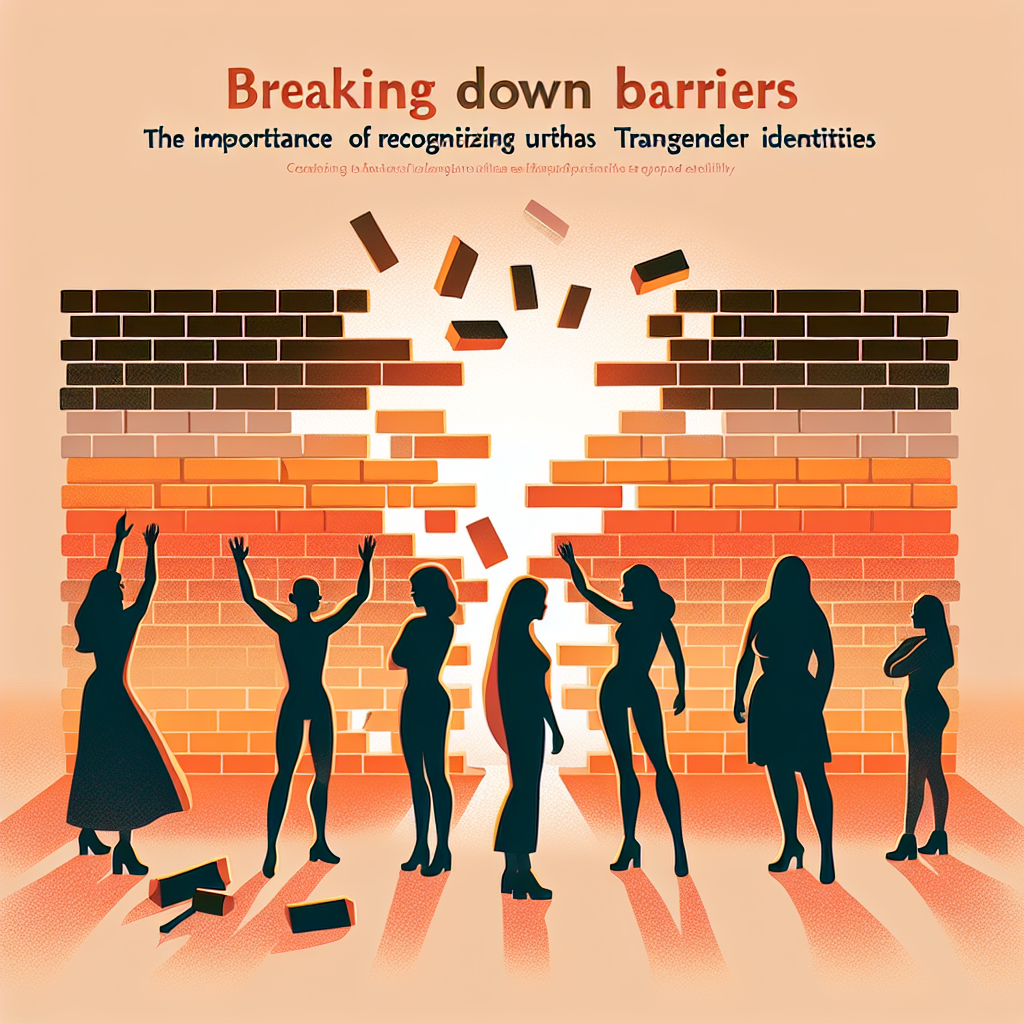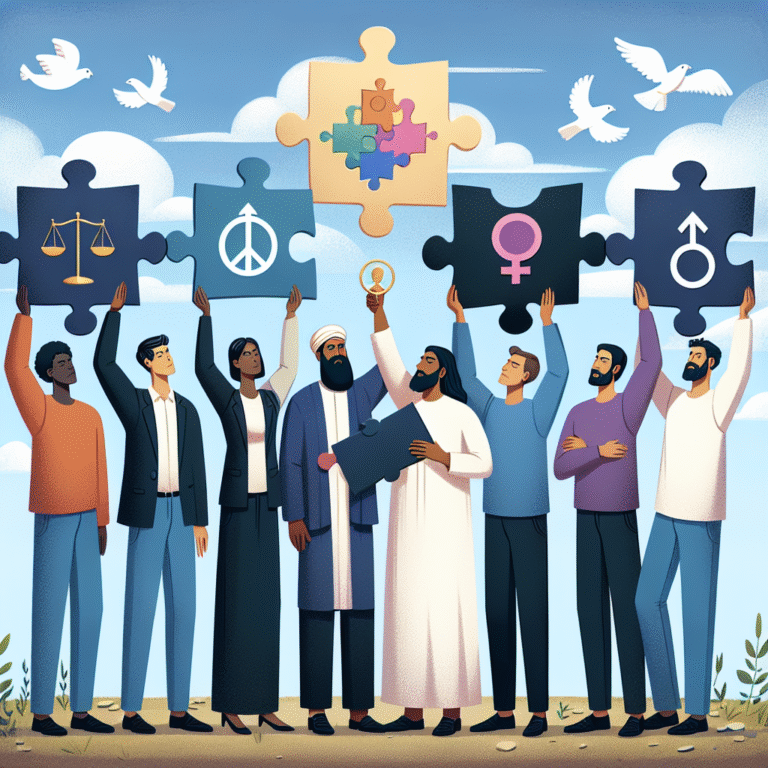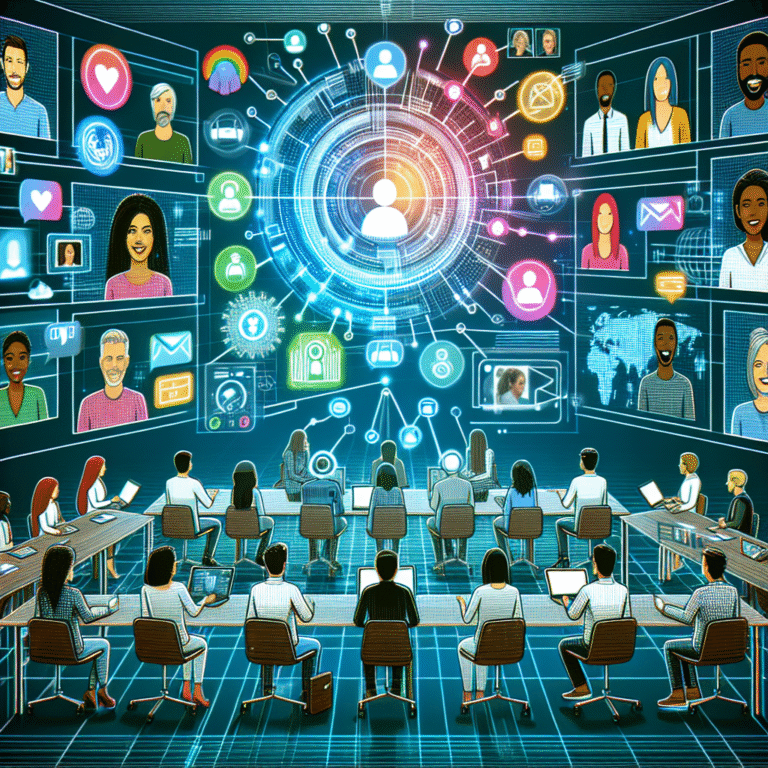
Introduction
In today’s society, where conversations around gender and identity are becoming more relevant, understanding and acknowledging transgender identities is crucial. Recognizing transgender identities is not merely a matter of personal understanding; it is an essential step in fostering an inclusive environment that respects and values the dignity of all individuals. Breaking down barriers in this context means dismantling misconceptions, stereotypes, and systemic obstacles that many transgender individuals face on a daily basis.
By breaking down barriers and embracing transgender identities, we not only stand up for justice and equality, but we also enrich the fabric of our communities. As we delve deeper into this topic, we will explore its significance, relevant case studies, and actionable insights to cultivate a more inclusive society.
Understanding Transgender Identities
What Does Being Transgender Mean?
At its core, being transgender means that an individual’s gender identity does not align with the sex they were assigned at birth. This can encompass a wide spectrum of identities, including non-binary, genderqueer, and genderfluid individuals. Understanding this terminology is the first step in breaking down barriers: the importance of recognizing transgender identities goes beyond individual experiences, influencing societal norms and policies.
The Spectrum of Gender
Gender is not a binary concept; rather, it exists on a spectrum. Acknowledging this spectrum allows us to better understand the complexities of gender identity. As we recognize transgender identities, we shift our focus from outdated binaries and embrace a more nuanced view of gender that reflects individual experiences.
The Importance of Recognition
Combatting Discrimination and Violence
Discrimination against transgender individuals is prevalent across many sectors, including healthcare, employment, and education. A 2020 study revealed that 40% of transgender individuals faced discrimination in their workplaces. Recognizing transgender identities is crucial to combatting this discrimination. By fostering awareness and understanding, we can create safer environments and promote equal opportunities.
Case Study: Transgender Protections in Employment
The landmark case of Bostock v. Clayton County (2020) brought attention to the need for recognizing transgender identities at work. The U.S. Supreme Court ruled that the Civil Rights Act of 1964 protects employees from discrimination based on sexual orientation and gender identity. This case is a testament to the power of recognition; by officially acknowledging transgender identities, legal protections can prevent discrimination and promote workplace inclusivity.
| Issue | Outcome |
|---|---|
| Discrimination at Work | Legal protection instituted |
| Psychological harm | Reduced instances after this landmark decision |
Mental Health and Well-Being
Recognition matters not just sociologically; it holds significant implications for mental health. Studies show that transgender individuals who receive social support exhibit lower levels of depression and anxiety. Recognizing and affirming one’s gender identity leads to a stronger sense of belonging and acceptance.
Case Study: The Impact of Affirmative Care
Research from the McLemore Lab at Stanford University found that transgender individuals who engage in affirmative healthcare—where healthcare providers recognize and support their gender identity—experience improved mental health outcomes. This reinforces the argument: breaking down barriers is essential for recognizing transgender identities and fostering mental wellness.
| Health Outcome | With Affirmation | Without Affirmation |
|---|---|---|
| Depression Rates | Lower | Higher |
| Anxiety Levels | Reduced | Increased |
Overcoming Societal Misconceptions
Education and Awareness
Education is pivotal in breaking down barriers related to transgender identities. Schools, workplaces, and communities should implement training programs that educate individuals on the challenges and realities faced by transgender people. Incorporating gender diversity in educational curricula can change perceptions and foster a culture of acceptance.
Representation Matters
Representation in media, politics, and leadership roles is crucial. When transgender individuals are included in these spheres, it normalizes their existence and emphasizes the importance of recognizing transgender identities. It shows society that transgender individuals are not “others” but integral parts of the community.
Legal Framework and Policy Changes
The Role of Legislation
Policies play a vital role in enforcing the recognition of transgender identities. Government initiatives like the Equality Act in the U.S. aim to extend civil rights protections to LGBTQ+ individuals, including transgender people. Such legislation is essential for breaking down barriers; without legal recognition, discrimination often persists unchecked.
International Case Studies
Different countries have taken varied approaches to recognizing transgender rights. For instance, Sweden is known for its progressive policies, allowing individuals to change their legal gender by declaration. Such measures set a precedent for the importance of recognizing transgender identities globally.
Personal Stories and Testimonials
Voices of Change
Hearing from transgender individuals adds depth and authenticity to the conversation. The stories of those who have navigated the transition process, faced discrimination, or found acceptance highlight the real-world application of recognizing transgender identities. These testimonials not only educate but also cultivate empathy and understanding.
Case Study: Transgender Youth and Family Acceptance
Research indicates that transgender youth who are supported by their families experience lower rates of suicidal ideation. One personal narrative from Alex, a transgender teenager, poignantly illustrated the importance of affirmation: “When my parents finally understood I was transgender and started using my correct name, it saved my life.” Such stories reinforce why recognizing transgender identities is crucial.
Actionable Insights: How to Support Transgender Individuals
Create Inclusive Spaces
Workplaces and institutions can establish policies that recognize and affirm transgender identities, including preferred name usage and gender-neutral restrooms.
Engage in Allyship
Individuals can actively support transgender rights through advocacy, education, and solidarity. Joining organizations that promote transgender rights or participating in awareness campaigns can initiate change at a community level.
Promote Open Dialogue
Engaging in open, respectful conversations about gender identity can promote understanding and dispel myths.
Conclusion
Breaking down barriers: the importance of recognizing transgender identities is pivotal for achieving an inclusive society where everyone can thrive. Understanding, acknowledgment, and acceptance are not just niceties; they are necessities. By cultivating awareness and continuously advocating for recognition, we not only uplift transgender individuals but enrich our communities.
Let’s be proactive: engage in conversations, educate ourselves and others, and foster environments where all identities are acknowledged and celebrated. Together, we can break down these barriers.
FAQs
What does it mean to be transgender?
Being transgender means that a person’s gender identity does not align with the sex they were assigned at birth.How can I support transgender individuals?
Support can include using correct pronouns and names, advocating for inclusive policies, and educating yourself and others about transgender issues.Why is recognition of transgender identities important?
Recognition helps combat discrimination, fosters mental well-being, and creates inclusive environments, leading to a healthier society.What are some common misconceptions about transgender people?
Common misconceptions include the belief that gender is strictly binary, or that transgender individuals are confused. Education is key to dispelling these myths.- How can workplaces become more inclusive for transgender employees?
Workplaces can implement policies that allow for name and pronoun changes, provide gender-neutral restrooms, and offer training about transgender issues.
By recognizing and supporting transgender identities, we move closer to a world where everyone feels safe and valued, helping to break down barriers and promote inclusivity.

















